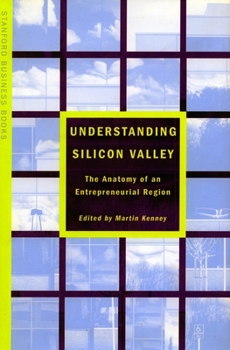Understanding Silicon Valley: The Anatomy of an Entrepreneurial Region
Select Format
Select Condition 
Book Overview
What has made Silicon Valley so productive of new technologies and new firms? How did its pioneering achievements begin-in computer networking, semiconductors, personal computing, and the Internet-and what forces have propelled its unprecedented growth? This collection of nine chapters by contributors from varied disciplines-business, geography, history, regional planning, and sociology-examines the history, development, and entrepreneurial dynamics...
Format:Paperback
Language:English
ISBN:0804737347
ISBN13:9780804737340
Release Date:August 2000
Publisher:Stanford Business Books
Length:304 Pages
Weight:0.35 lbs.
Dimensions:0.7" x 6.0" x 9.0"
Related Subjects
Biography & History Business Business & Finance Business & Investing Business & Management Company Profiles Computer Science Computers Computers & Technology Engineering History History & Culture Manager's Guides to Computing New Business Enterprises Popular Economics Science & Math Small Business & Entrepreneurship State & Local Technology TextbooksCustomer Reviews
2 ratings
A "Must Have" for anyone interested in Silicon Valley History
Published by Thriftbooks.com User , 14 years ago
One of the elements of a successful technical history is how often you refer back to it. Since this a compilation of essays by a series of authors each writing a chapter the quality varies. However it's worth buying just for the essays about the Military History of the Valley by Stuart Leslie and the Origins of Production Networks by AnnaLee Saxenian.
perfect book for the new Silicon valley residents!
Published by Thriftbooks.com User , 23 years ago
At the center of all questions about the Valley lies the matter of innovation-for the Valley occasionally appears like a perpetual innovation machine. I say "innovation" rather than simply "invention," because innovation, to me, means invention implemented. And I have grudgingly come to realize that invention is often the easy part of innovation. The hard part is usually the implementation. Here I was particularly interested in Stuart Leslie's well-chosen quotation from a letter of Frederick Terman. Terman was the Stanford University dean who played godfather to Hewlett Packard and so many other early start-ups in the Valley. When he left the university to work on radar during World War II, he wrote back to a colleague at Stanford, "I had never before realized the amount of work required to make a device ready for manufacture after one had a good working model." It was a lesson he clearly learned well as he guided young Stanford graduates to innovative success.






